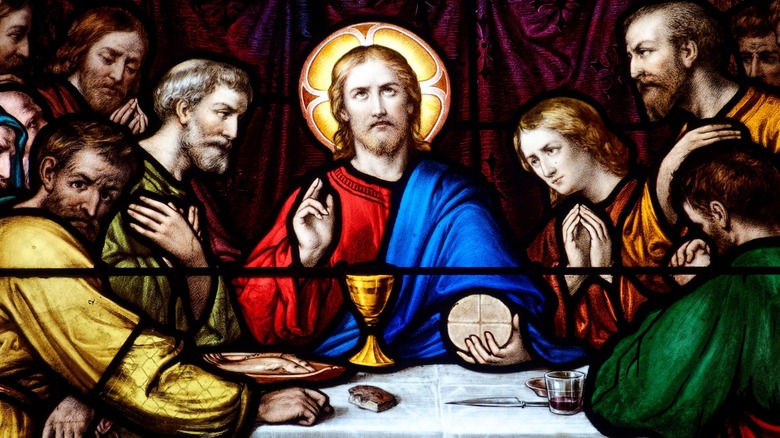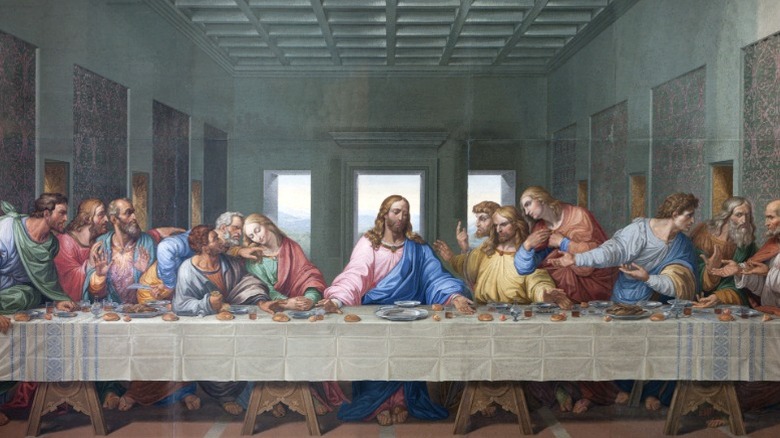What Was Actually Served At The Last Supper?
We all know the story. Jesus sits down with his disciples one fateful day, offers bread and wine as his body and blood, and predicts that one of them will betray him. It's been immortalized by countless artists, most famously Leonardo da Vinci, and it's become one of the key Catholic sacraments in the form of the Eucharist. But what was actually served at the Last Supper? Was it really just bread and wine, or was there a nice spread available for Jesus and his crew to nosh on? Obviously, none of us were there, so we can't say with absolute certainty. But thanks to what archaeologists know about the cuisine in that area of the Middle East at that point in history, we have a pretty good idea of what else they might have eaten.
There was, of course, bread and wine. The bread was unleavened, similar to matzo (or indeed, the communion wafers you get at Mass); the wine was likely red and strongly concentrated, not unlike today's Amarone. But as this was the middle of spring in Palestine, there may have also been dried figs, olive oil, and honey. At other famous Biblical gatherings, such as the wedding at Cana where Jesus turned water into wine, there would have been tzir, a kind of fish sauce. In three of the four Gospels, the Last Supper was a Passover seder, meaning there may have also been lamb, bitter herbs, and a bean dish called cholent (no kosher Jell-O, though). However, in the Gospel according to John, generally agreed to be the most biographically accurate account of Jesus' life, the Last Supper was the day before Passover. (And in any case, meat was mostly for the wealthy at that time.)
The Last Supper didn't look like the painting
As iconic as traditional renderings of the Last Supper may be, the real supper didn't look much at all like what Leonardo painted. For one thing, there was no grand rectangular table. The food would have been set on a table lower to the ground, and diners would have eaten while sitting on cushions. For another thing, the tableware would have been made of stone, not the shiny-looking plates you might find in certain paintings. (They're probably easier to clean, although they wouldn't have had access to a dishwasher in those times.)
In addition, though it certainly makes for a more striking composition, Jesus would not have been sitting squarely in the middle of the action. As the host, he would have been sitting second from the left, with his closest friend (John) to his right and his guest of honor (Judas) to his left. Of course, we're not going to get into a fight with Leonardo da Vinci over how to paint a scene, so let's just chalk it up to artistic license.

